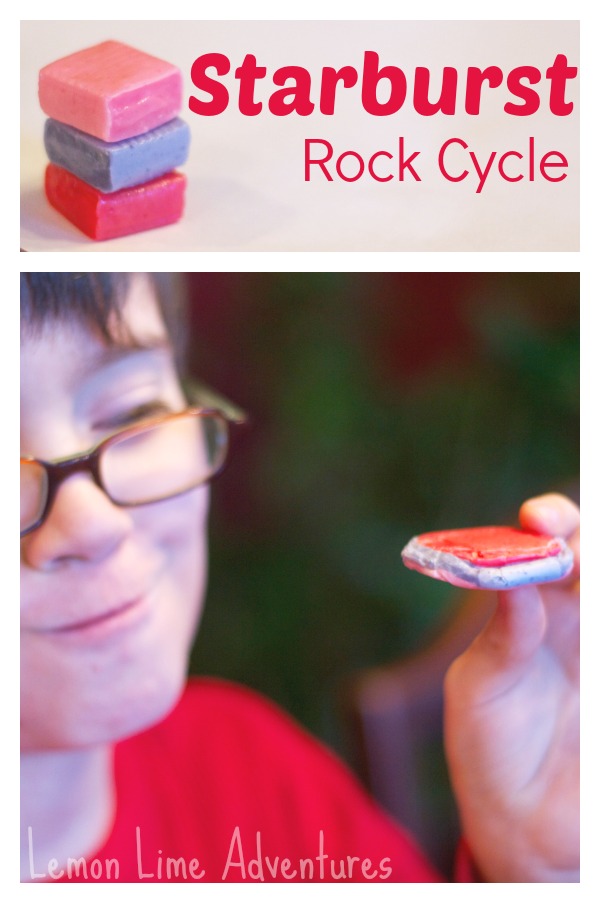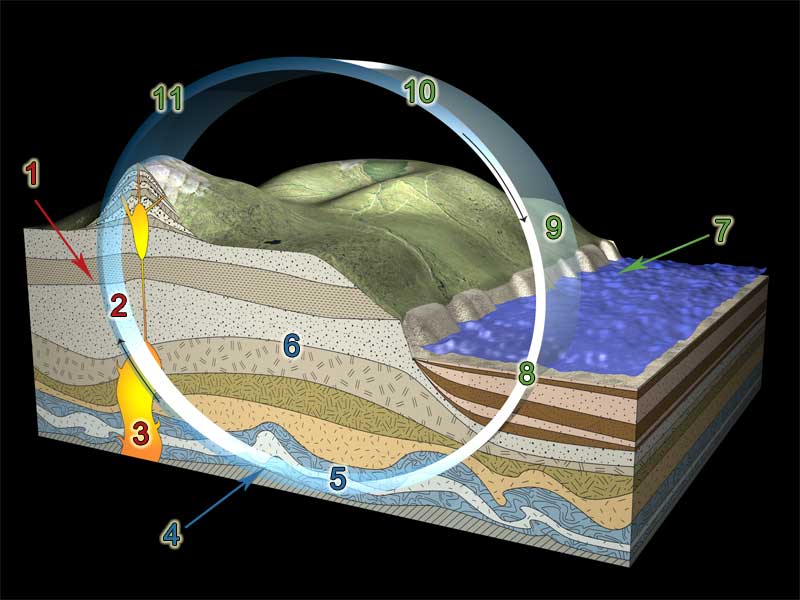Read:
Geology Rocks! pg. 15-21Everything Rocks & Minerals, pg. 22-23, pg. 46-47



Explore:
Rock Cycle Explanation:
In order to better understand the different types of rocks, scientists have grouped them into three groups based on how they are similar and how they are different. The three types of rock are igneous, sedimentary, and metamorphic. Each type of rock is formed in a different way and each type of rock can be changed into the other types of rock. This is called the Rock Cycle-- basically, the process that makes and recycles rocks.
Most rocks on earth began as igneous rocks. Igneous rocks are formed from magma. Magma cools and solidifies into rock. When igneous rocks are exposed on the surface, time and weather break the rock down into smaller and smaller pieces. This is called weathering and erosion. Wind and water carry the smaller pieces of igneous rocks into piles called sediment beds. Over time the sediment beds get buried and the pieces of rock become cemented together to form a new type of rock called a sedimentary rock.
If the sedimentary rock is exposed at the surface it can be eroded away and changed into a new sedimentary rock. However, if it gets buried deep in the Earth, heat and pressure essentially bake the rock, changing it into something new. This is called metamorphosis-- and the new rock is called a metamorphic rock. Metamorphic rocks can also be weathered and eroded and eventually changed into sedimentary rocks. Or, if metamorphic rock is forced deeper into the Earth, the rock can melt and become magma. If the magma cools and hardens it will form into igneous rocks.
Most rocks on earth began as igneous rocks. Igneous rocks are formed from magma. Magma cools and solidifies into rock. When igneous rocks are exposed on the surface, time and weather break the rock down into smaller and smaller pieces. This is called weathering and erosion. Wind and water carry the smaller pieces of igneous rocks into piles called sediment beds. Over time the sediment beds get buried and the pieces of rock become cemented together to form a new type of rock called a sedimentary rock.
If the sedimentary rock is exposed at the surface it can be eroded away and changed into a new sedimentary rock. However, if it gets buried deep in the Earth, heat and pressure essentially bake the rock, changing it into something new. This is called metamorphosis-- and the new rock is called a metamorphic rock. Metamorphic rocks can also be weathered and eroded and eventually changed into sedimentary rocks. Or, if metamorphic rock is forced deeper into the Earth, the rock can melt and become magma. If the magma cools and hardens it will form into igneous rocks.
Activity 1: Edible Rock Cycle
Help remember how the three types of rocks are formed using this fun experiment with Starburst candy.
Activity 2: Igneous Rocks
Complete the "Sugar on a Sheet" and "Sugar on a Stick" experiments from the Geology Rocks! book on pg. 18-19.
OR
Complete the "Salt of the Earth" crystal experiments on pg. 46-47 of the Everything Rocks & Minerals book.
Here is another "recipe" for Rock Candy:

Activity 3: Break Open a Geode
A geode is a type of rock formation that occurs when a pocket of air or gas is trapped and forms a cavity in an igneous rock. A hard "crust" forms around the outside of the cavity. Groundwater, which can often contain dissolved minerals, seeps through the rock over a long period of time, forming beautiful crystals inside the cavity.There are several places you can purchase a geode kit, like this one here at Mineral Planet, or this one from Gem Center, USA. Then get a hammer and break it open. Use a magnifying glass to see what's inside!
Read more about geodes here.
 j
j
No comments:
Post a Comment